The roaring twenties was a golden era of fashion: it was the epitome of the new modern age fashion. As a result of WW1, women were left with a comfortable lifestyle. Their sense of fashion was reflected where young women outnumbered the older Edwardian generation. 1920s fashion made a statement that resembled their spirited and youthful style of living: it was made for the youth. 1920s women embraced their carefree and lively manner which is easily represented by their choice of clothing. As a result, this enabled them to pursue new identities and opened new doors for the rise of women’s rights.
As staying home remained as one of the pervading activities conducted by these women in the 20s, clothing was at its most comfortable state. While at home in the company of just their family members, they were dressed in the style of comfort.
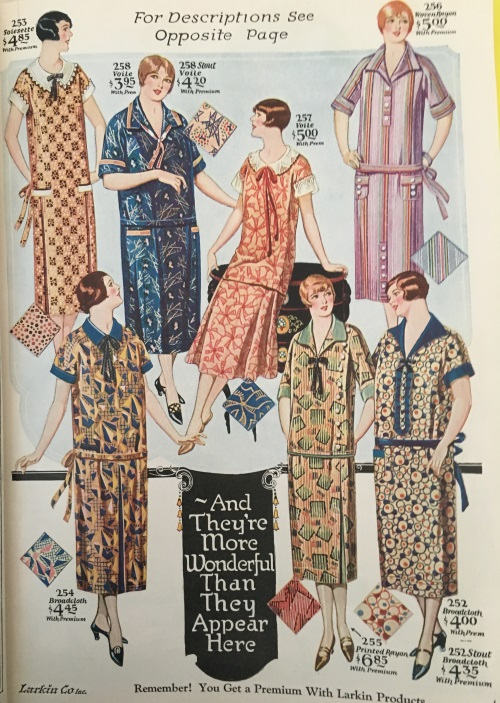
The housewife wore simple, flowy cotton dresses. Women involved in housework typically wore aprons that were handmade. Although the aprons were designed in a simple manner, it was durable for women to conduct tedious housework. The conventional chores in the 1920s household included many of the contemporary housework today. This was typically complemented with thick black cotton stockings and low heel Oxfords. The dresses came in all shapes and sizes – some were colorful and incorporated various colors while others came in solid colors with exotic embroidery and trim such as laces. One way to distinguish housewives from working women is the fact that housewives typically have white collars.
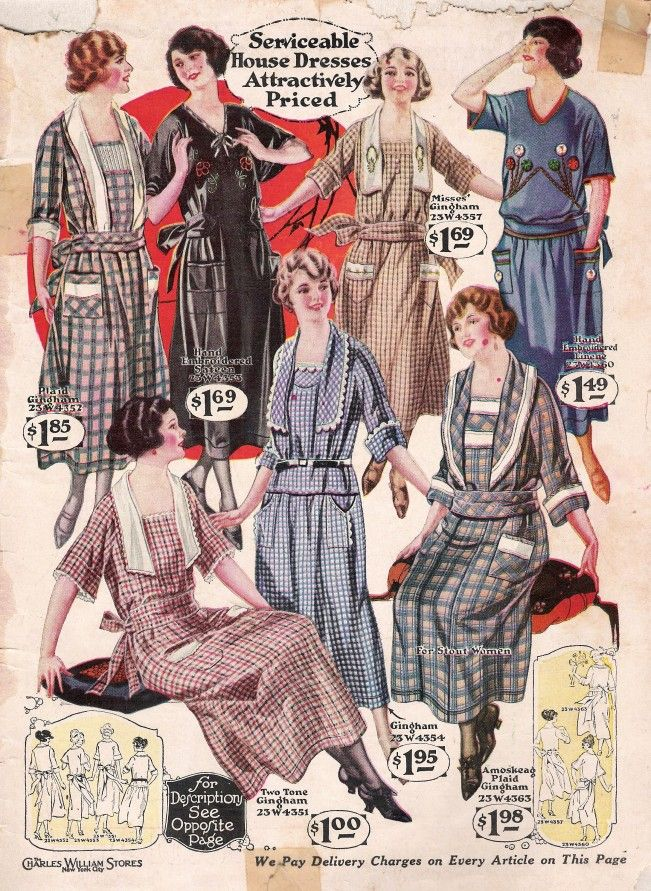
Apart from cotton house dresses, many women were involved in manual labor. During the roaring 20s, factory work was one of the prime fruits of labor. Work such as sewing, nursing, maid or nanny represented the fundamental jobs as a woman. They were told to wear a uniform coat or apron over a cotton house frock.
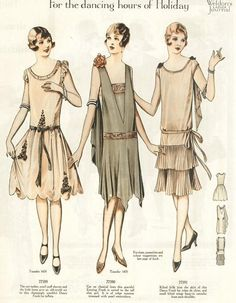
Even while women were involved in tedious housework or general work, they took the time to stick to the fashion trends in contemporary times. A famous haircut during the roaring 20s was the latest bobbed haircut. This was usually complemented with cotton house dresses that flowed. The cotton house dresses were usually laminated with embroidery and various patterns such as laces.
For women working in professional sectors – such as teachers, journalists, and telephone operators – a simple skirt and blouse were typically worn.
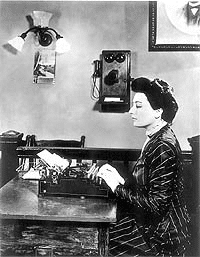
When a woman completed her housework chores and was done with her professional work, she is typically the one in the household who conducted errands around town. While men were told to work and earn money, women were the ones taking care of the house and running errands. Clothing was kept simple but the quality of clothing was of higher quality than cotton house dresses. They wore either dress paired with a pair of mid-heel Oxfords, Mary Jane, or T-Strap shoes, which is most common in the daytime fashion.
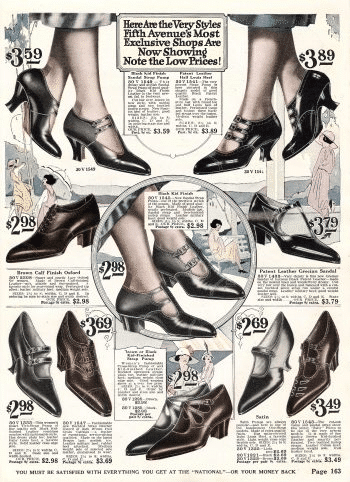
However, tailored dresses made out of silk-blend crepe or wool were also common. These were seen to be more common in youths and younger women. These dresses featured a natural waist stash that moved lower in the waist area. As dresses like the cotton house dresses were usually loose and not fitting, the tailored dresses were seemingly more sculptured and fitted the shape and sizes of the women. Although the upper portion of the dresses was evidently loose – as commonly seen in dresses in the 20s – the lower portion leading down to the knees were slightly more fitting. Details were added to the dress that elongated the body such as a long necktie, hats, buttons, or even ribbons.
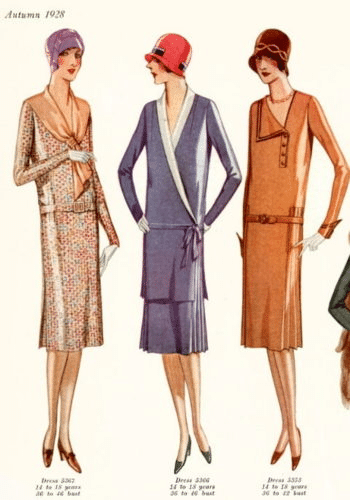
In terms of jewelry, intricate jewelry complimented the simplicity of the designs of the dresses. Accessories with a suit or dress would coordinate, but not match, a woman’s outfit. Although the jewelry represented the cohesive nature of the outfits, and the outfits were seen to be accentuated through the use of jewelry, it was still kept simple. Especially for women involved in housework chores, thick black stockings was an essential piece to complement the house dresses. However, for women running errands, cloche hats and gloves were usually worn.
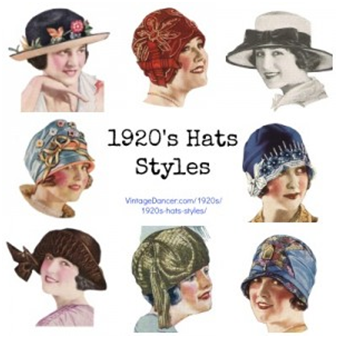
Women never left their houses without hats. These hats were worn most commonly during summer and tropical weathers and winter – it is certainly adaptable and timeless despite the change in seasons. The most iconic hat during the 20s was the cloche hat. This is also named after the word ‘bell’ because they were shaped around a crown and a small brim. Women often had to tilt their heads to visibly see clearly while wearing the cloche hat. Hats were more simple than the other eras: it was usually presented in solid colors with visibly fewer decorations.
For special events, women dressed up. For poorer women, she would only have a single outfit that outshined the others. However, the dress code still remains modest and covered just like the other pieces of clothing from this era. During the 20s, one of the main activities that fit the societal nature during the era was having tea with friends. Tea parties were usually either semi-formal or formal. Tea dresses were made with lighter and brighter materials. Afternoon dresses represented the degree of beauty of women. Depending on the outfits they showed up with, this was a mark of the societal hierarchy.
As explored throughout the article, women were dressed in rather simplistic and formal nature during the 20s. 1920s women embraced their carefree and lively manner which is easily represented by their choice of clothing. As a result, this enabled them to pursue new identities and opened new doors for the rise of women’s rights. This opened many doors and opportunities for women in the 20s. The outfits worn by these women remain timeless despite the shift in societal changes and time.

